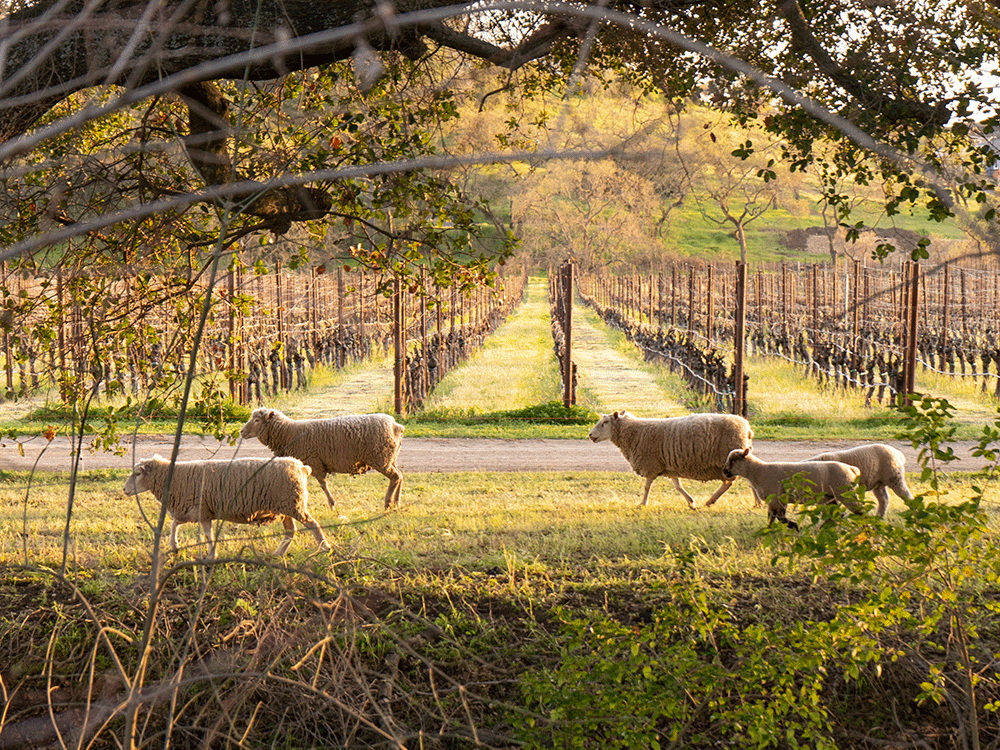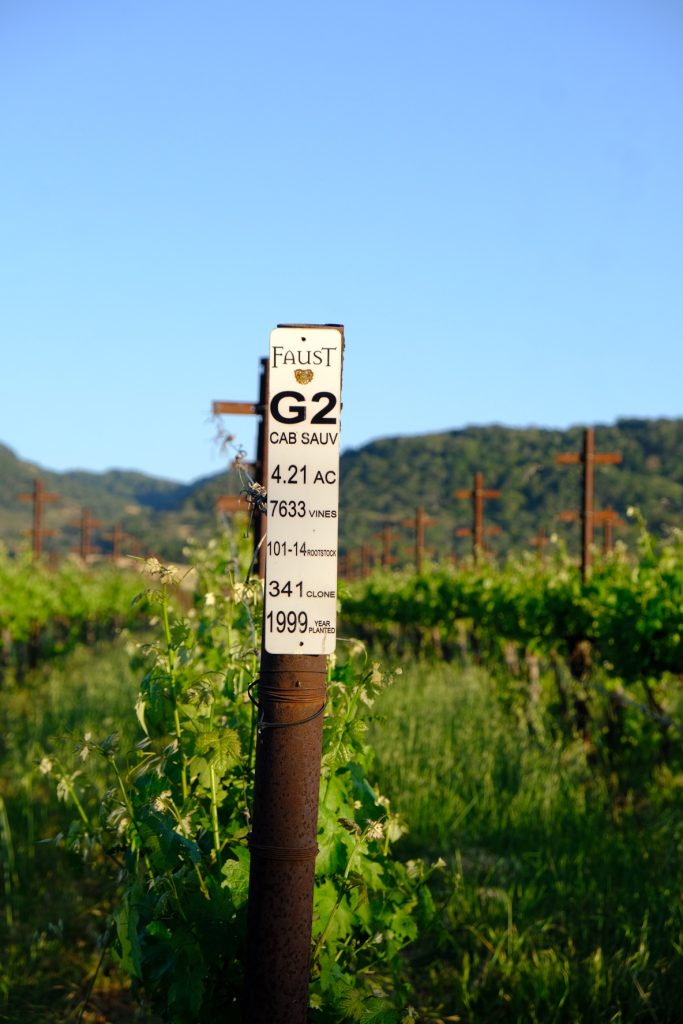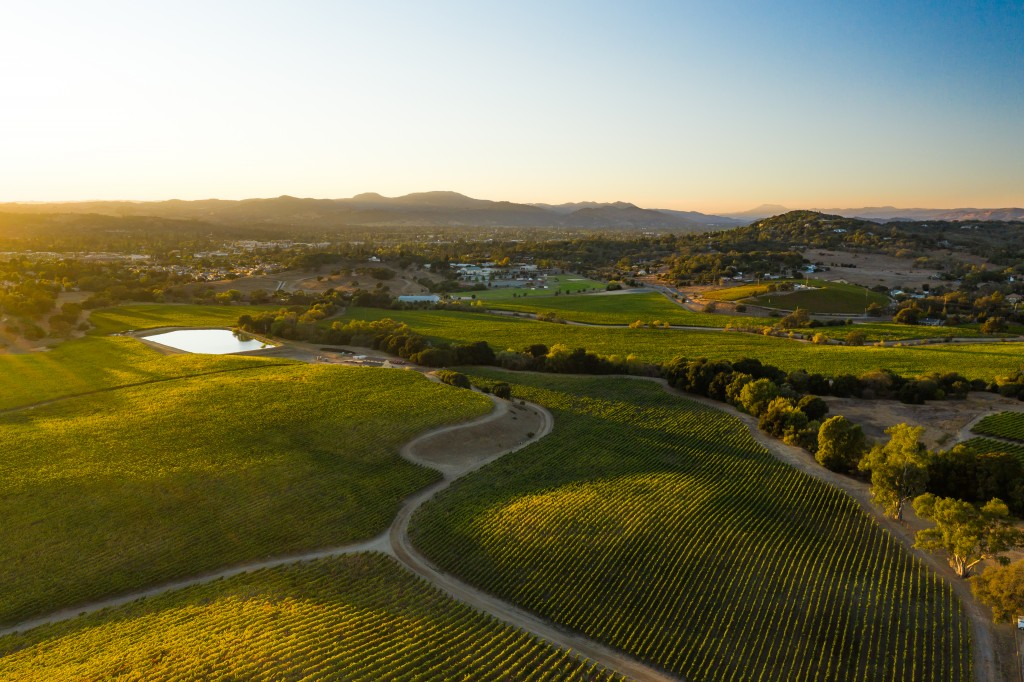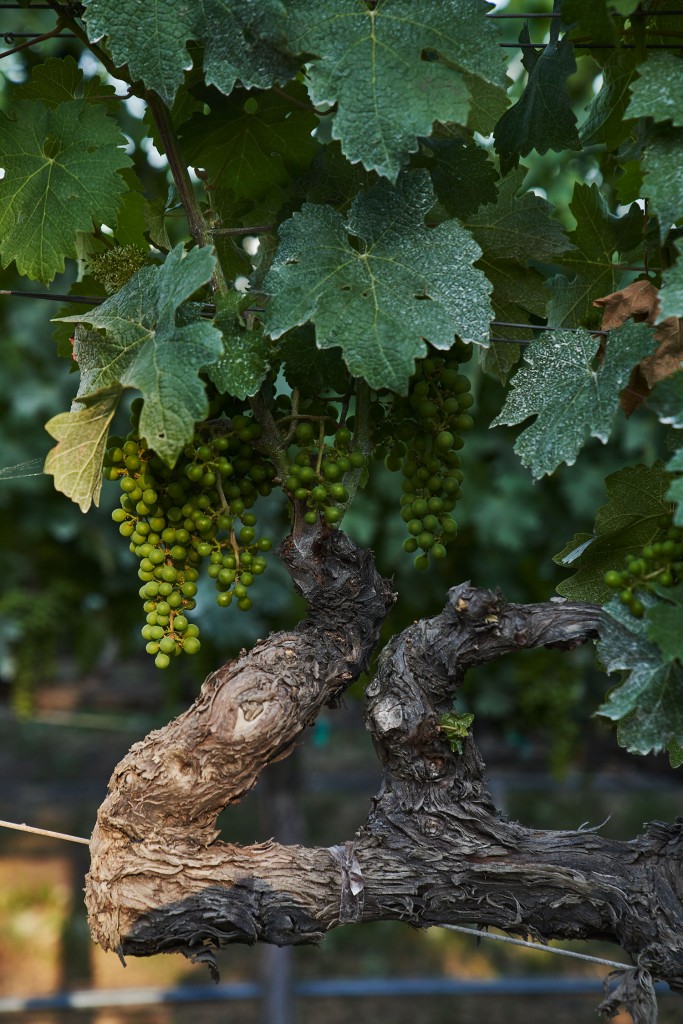A NATURAL DIVERSITY
Our wine is a pure expression of our land. In 1998, when Valeria and Agustin Huneeus first walked the rolling hills of this erstwhile dairy farm, they saw a parcel of stunning natural beauty. Ancient valley oaks dotted ridges and swales. Seasonal streams transected the landscape, nurturing myriad forms of wildlife: deer, of course, but also bobcats, foxes, coyotes, geese, and a host of other birds.
Today the water, coursing through the streams and in the winery’s vital pond, nurtures vineyards, too, moderating extreme temperatures and standing by for frost protection. The afternoon sun hits west-facing slopes, sending the warmth that late-ripening Cabernet Sauvignon craves. And volcanic soils from ancient eruptions—a layer of ash that holds moisture and draws roots deep, topped by mineral-rich gravelly loam and volcanic rock—combine with Coombsville’s cool climate to create wines of visceral freshness and minerality.
“We’re in the Goldilocks zone,” says winemaker David Jelinek, explaining the confluence of complex forces on the wine. “We have a cooler site but volcanic soil, which allows us to extend the growing season. That means a long time to develop depth of flavor without the grapes getting too ripe.”
Preserving the natural diversity within our Faust Vineyard—at 128 acres total, a prominent swath amidst Coombsville’s patchwork of tiny, family-owned vineyards—is more than a mission for our team. It is our passion, as we farm vines that are perfectly in tune with the elements—drawing energy from the vibrant life that is their habitat, above and below ground. And shaping pure and vivid Cabernet—balanced on a pinpoint between sweet fruit and savory minerality—is our way of joining forces with the land that inspires us.
AMONG THE VINES
It was a wise farmer who said, “The most important thing you can apply to a vineyard is your shadow.” In our Faust Vineyard, we farm precisely, but with the gentlest organic methods to amplify our wines’ fresh profile and natural balance.
Recognizing the ideal conditions for growing elegant Bordeaux-style wines in Coombsville took foresight on the part of our founders. It was far too cold here, most believed at the time. But instinct led to the conviction that Cabernet Sauvignon, in this climate and in these soils, would develop lovely ripe fruit and retain beautiful acidity. Indeed, the morning fog lifts late in our southern pocket of Napa Valley, keeping the summer air cool. But when it does, the gravelly loam and rocky volcanic soils warm quickly in the afternoon sun, ripening Cabernet at a slow, steady—optimal—pace.
So, our shadows track across the vineyard with the sun, our boots always on the ground. Our team relentlessly watches, records, tastes and learns. What gets us up in the morning is the work of understanding what our vineyard is capable of doing, how it does it, and how we can draw out its finest results. In winter, our sheep range through the rows too, grazing and fertilizing as they go.
Only the most interesting blocks make their way into The Pact, with fruit both intense and plush, but also marked by sophisticated minerality. We first parsed these high-performing sections of vines by tasting, but recent soil studies have, in fact, confirmed our findings, sometimes in complex amoeba-shaped blocks that we farm, pick, and vinify separately for our flagship Cabernet Sauvignon.
Our goal for The Pact is a degree of density, even richness, kept light on its feet (which is not to say light-bodied) by freshness. The Pact is at once complex and hedonistic—with exact balance we coax from the vineyard.







